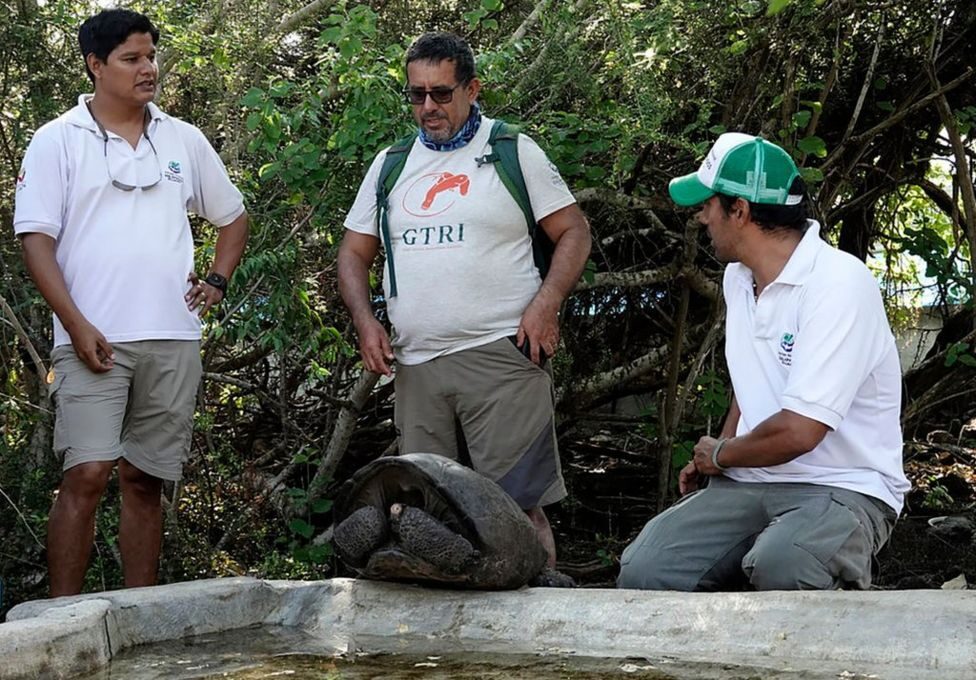
© AFPConservationist and park rangers found the female in 2019
Genetic tests have confirmed that a giant tortoise found on the Galápagos Islands is from a species which scientists thought had died out more than a century ago.
The single female was discovered during a 2019 expedition to Fernandina Island.
To prove the link, scientists took samples from the female to compare to the remains of a male from the species Chelonoidis phantasticus.
The last previous sighting of the species had been in 1906.
That sighting was made by scientists from the California Academy of Sciences who sailed to the Galápagos Islands to carry out comprehensive survey of their flora and fauna.
They took back the male specimen to the academy's herpetology department and it was samples from there that allowed geneticists from Yale University to determine 115 years later that
the female found in 2019 is indeed a Chelonoidis phantasticus, also known as Fernandina giant tortoise.
Ecuador, of which the Galápagos islands are a part, has celebrated the good news.
"It was believed to have gone extinct more than 100 years ago!" Environment Minister Gustavo Manrique tweeted of the Fernandina giant tortoise. "Hope is alive," he added.
The female Fernandina giant tortoise, which is estimated to be more than 100 years old, is currently in a breeding centre on Santa Cruz Island.
Scientists have found prints and faeces on Fernandina Island which they think indicate that there are more individuals of the species left in the wild.The Director of the Galapagos National Park, Danny Rueda, has said that an expedition will be launched to Fernandina Island to try to locate other members of the same species
R.C.